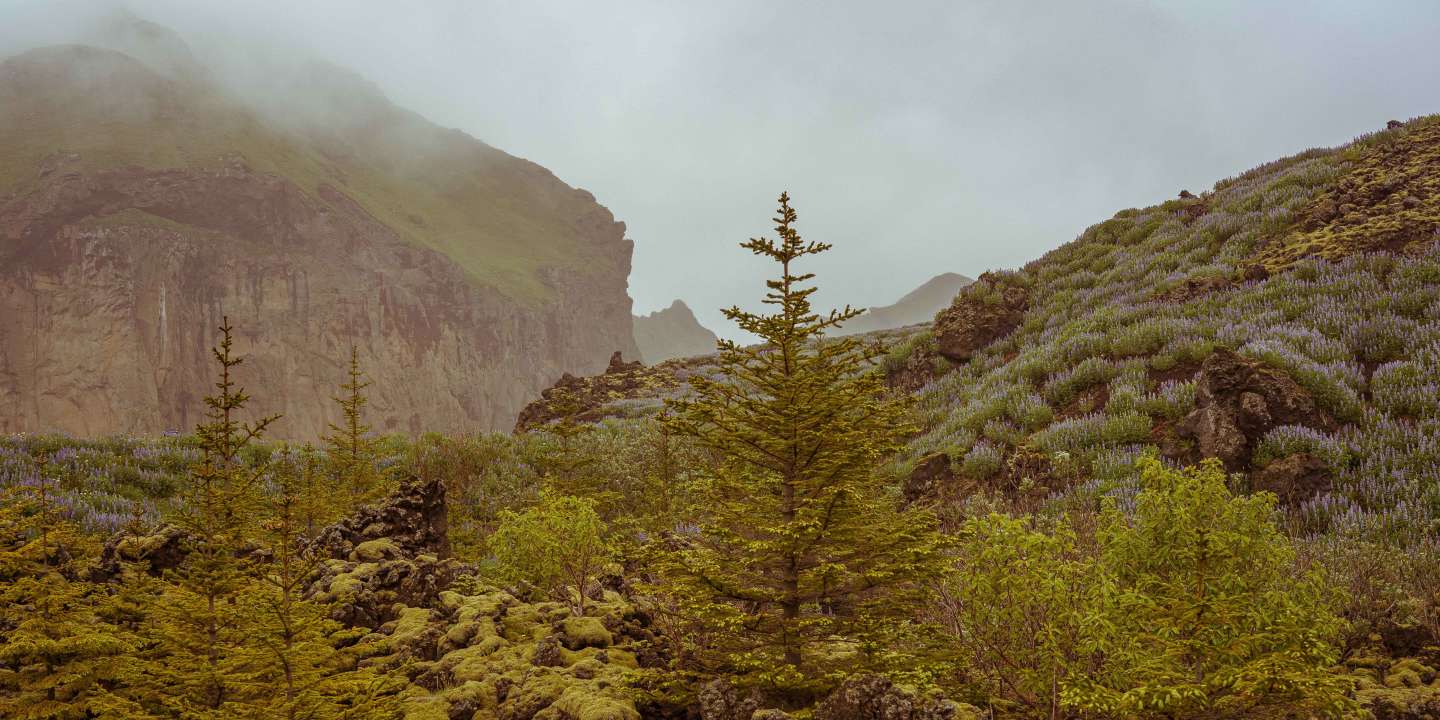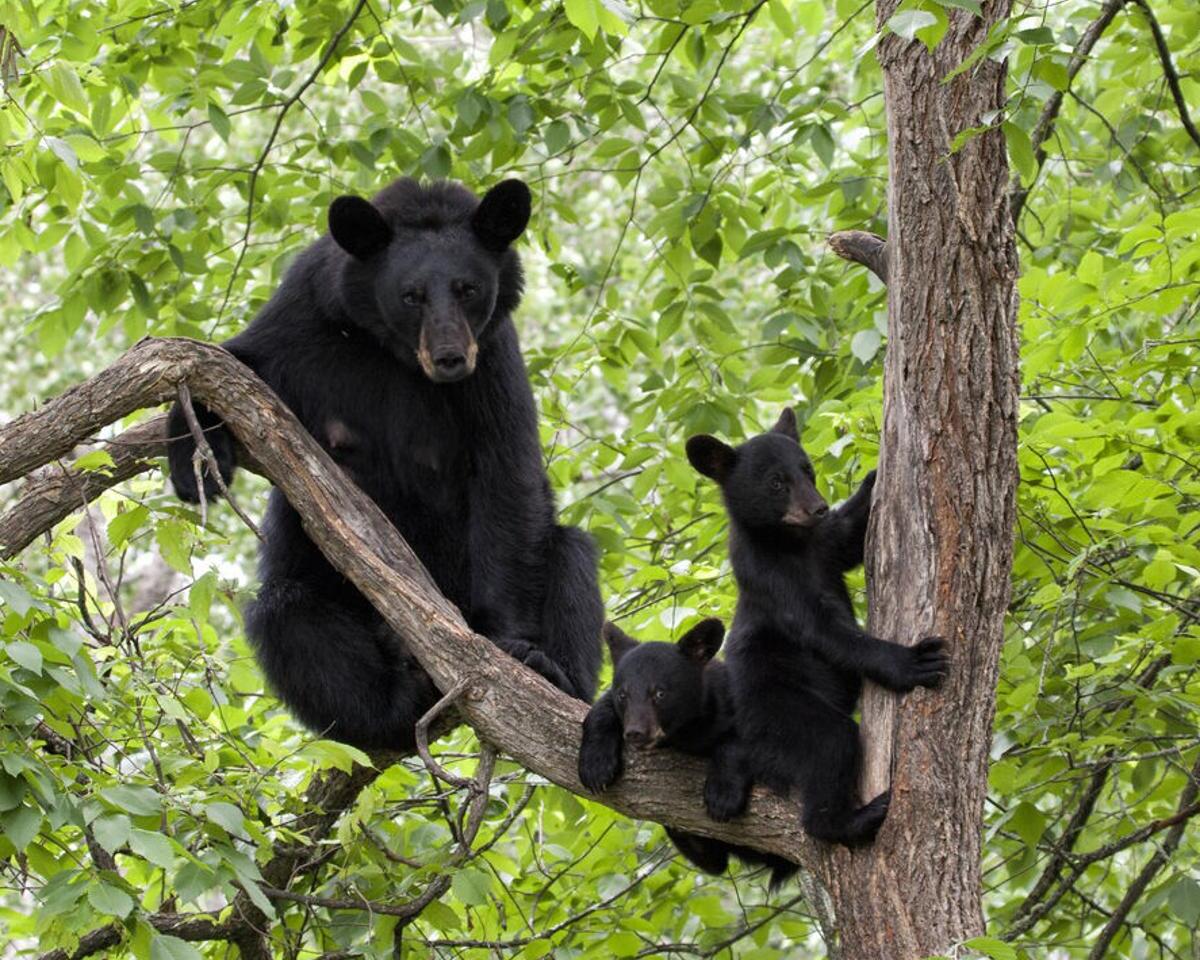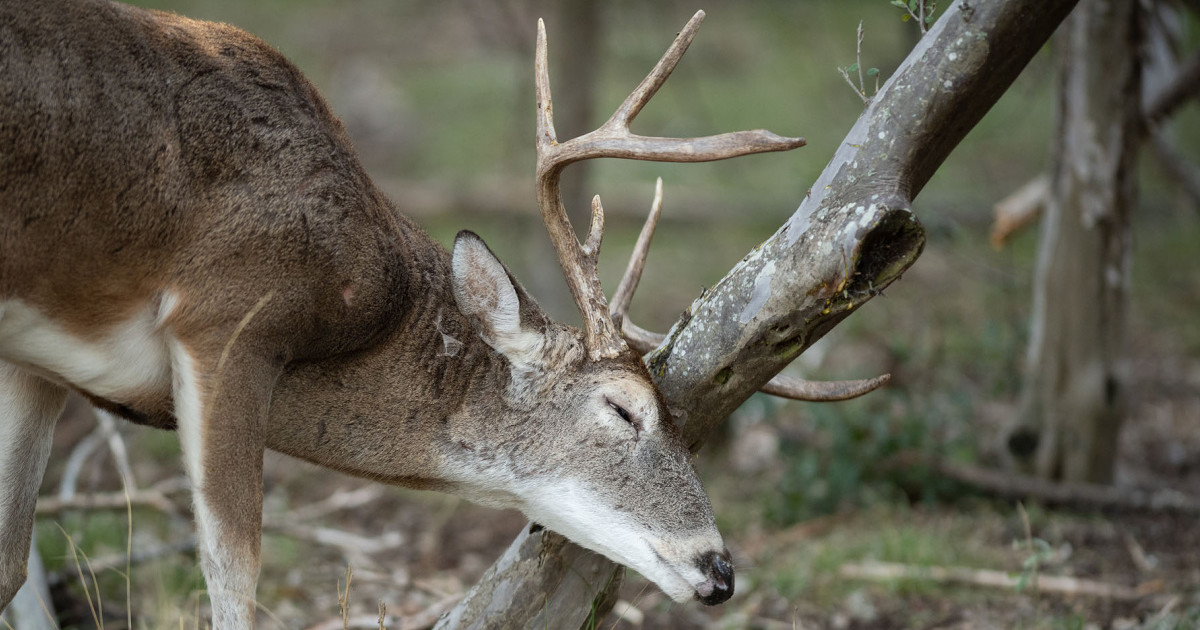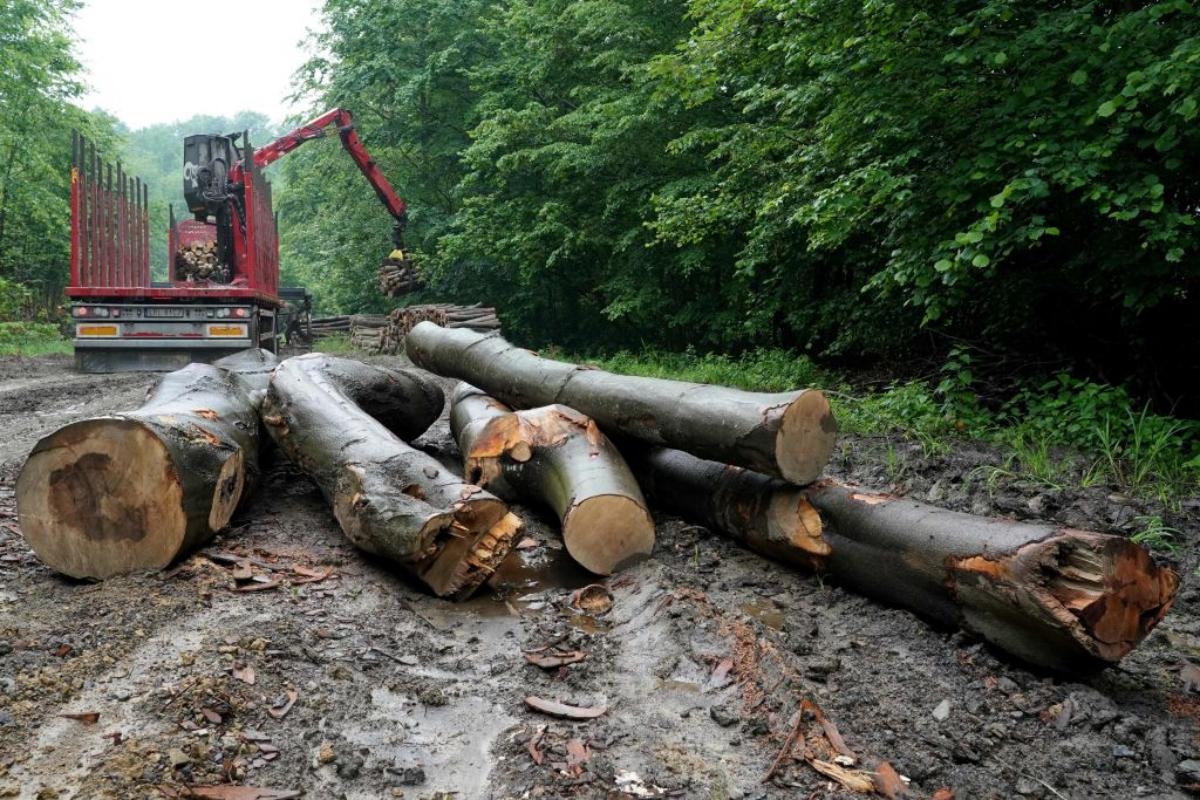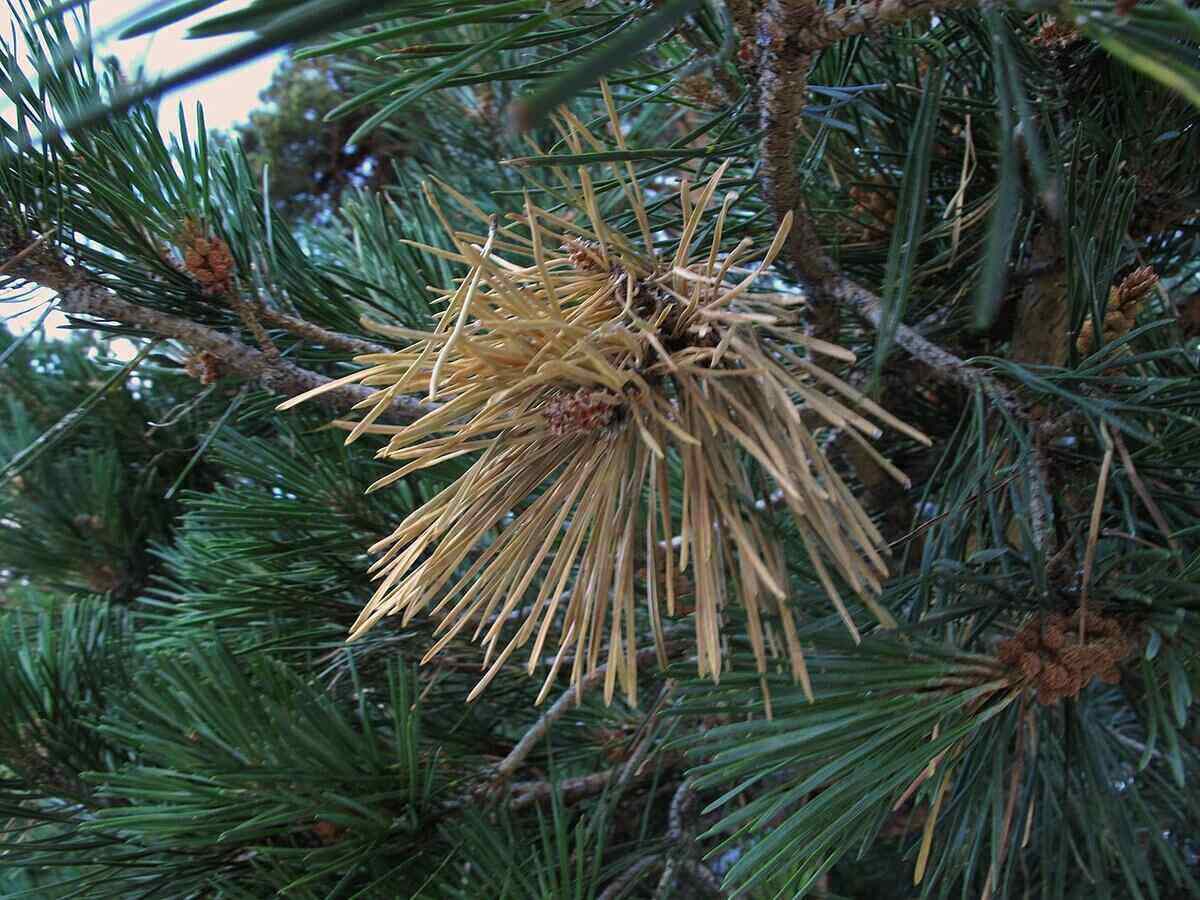Home>Gardening Basics>Understanding Soil>Why Are There No Trees In Ireland


Understanding Soil
Why Are There No Trees In Ireland
Published: October 28, 2023
Discover the secret behind the lack of trees in Ireland and gain a deeper understanding of the role soil plays in determining forestation.
(Many of the links in this article redirect to a specific reviewed product. Your purchase of these products through affiliate links helps to generate commission for Chicagolandgardening.com, at no extra cost. Learn more)
Table of Contents
Introduction
When one pictures the lush landscapes of Ireland, it is easy to envision rolling green hills, picturesque countryside, and charming villages. However, one peculiar aspect may stand out – the absence of trees. Unlike many other countries, Ireland is noticeably lacking in large forested areas. This unique characteristic has puzzled many and sparked curiosity about the reasons behind it.
Exploring the mystery of why there are no trees in Ireland requires delving into various historical, climatic, geological, and human factors. By examining these elements, we can gain a deeper understanding of the ecological landscape of the Emerald Isle.
Whether it’s the ancient depopulation of forests during historical periods or the influence of climatic conditions on tree growth, multiple factors have contributed to the current landscape. Additionally, the practices of agriculture, deforestation, urbanization, and natural disasters have played a significant role in shaping Ireland’s treeless scenery.
In this article, we will explore each of these aspects in detail, shedding light on the complex interplay of factors that have led to the distinct lack of trees in Ireland’s landscape. By doing so, we hope to offer a comprehensive and engaging understanding of this intriguing phenomenon.
Historical Context
To understand the absence of trees in Ireland, it is essential to delve into its rich historical context. Throughout millennia, humans have had a profound impact on the island’s forests and vegetation.
One significant period of deforestation occurred during the Iron Age, where forests were cleared to make way for farming and settlement. Ancient practices such as slash-and-burn agriculture led to the removal of trees and the creation of open spaces for cultivation.
During the medieval era, timber was in high demand for shipbuilding, construction, and fuel. The relentless exploitation of forests for these purposes further contributed to the reduction of Ireland’s tree cover.
Furthermore, widespread deforestation took place during the 16th and 17th centuries, driven by the expansion of English colonial rule in Ireland. Large tracts of forest were eradicated to pave the way for grazing land for livestock and to deny cover and resources to rebels.
As a result of these historical events, Ireland’s once abundant forests were decimated, and the landscape transformed into a patchwork of agricultural land.
While efforts have been made to reforest Ireland in recent years through initiatives such as the Great Green Wall project, it will take time for the long-lost forests to return to their former glory.
Despite this historical context, it is important to note that while Ireland may lack the extensive forest cover seen in other countries, it still boasts pockets of woodland and smaller-scale afforestation efforts.
Thus, understanding the historical context provides crucial insights into why there are no vast expanses of trees in Ireland today. The combined impact of centuries of deforestation, land use changes, and agricultural practices has shaped the current treeless landscape.
Climatic Factors
Climatic conditions play a significant role in determining the types and abundance of vegetation in any given region. In the case of Ireland, its unique climate has contributed to the absence of large forested areas.
Ireland’s maritime climate is characterized by mild temperatures, high levels of rainfall, and strong winds. While these factors are favorable for supporting lush green landscapes, they also pose challenges for tree growth.
The high rainfall amounts, particularly in the west and southwest regions of Ireland, lead to waterlogged soil conditions. Excessive moisture inhibits root development and can lead to poor growth and survival of trees. Moreover, the constant rainfall ensures that any nutrients present in the soil get quickly washed away, further hindering tree growth.
The prevailing strong winds also pose a challenge for trees to establish a strong root system. The exposed coastal areas are particularly prone to battering winds, making it difficult for trees to withstand such conditions.
Another factor influenced by Ireland’s climate is the relatively low level of sunlight. The frequent cloud cover reduces the amount of sunlight reaching the ground, limiting the energy available for photosynthesis. Trees require a certain threshold of sunlight to thrive, and the reduced availability in Ireland restricts their growth potential.
While these climatic conditions are not inherently unsuitable for tree growth, they create challenging circumstances that limit the development and expansion of forests. However, it is important to note that Ireland’s climate still allows for the growth of smaller-scale woodlands and tree species that are well-adapted to these conditions.
Understanding the impact of Ireland’s maritime climate provides valuable insights into the absence of large, dense forests. The combination of waterlogged soil, strong winds, and reduced sunlight creates a challenging environment for tree growth and contributes to the unique open landscape seen in Ireland today.
Geological Factors
Geological factors also play a role in the absence of trees in Ireland. The composition and structure of the soil, as well as the presence of certain geological features, can impact the growth and distribution of vegetation.
One key geological factor in Ireland is the prevalence of peat bogs. Peat is formed from the accumulation of dead plant material in waterlogged areas over thousands of years. These bogs are acidic and nutrient-poor, making it challenging for trees to establish and grow. The waterlogged conditions and lack of essential nutrients limit the root development and overall vigor of trees.
Peatlands cover a significant portion of Ireland, especially in the western and central regions. The dominance of peat bogs contributes to the sparse tree cover in these areas. While some trees, such as birch and willow, can tolerate the acidic conditions of peatlands, they do not form dense forests.
Another geological factor is the presence of limestone in parts of Ireland. Limestone is a type of sedimentary rock rich in calcium carbonate. Areas with limestone bedrock tend to have alkaline soils, which may not be suitable for certain tree species. The alkaline conditions can limit the availability of essential nutrients, negatively impacting tree growth and survival.
Additionally, Ireland’s rugged terrain and rocky landscapes, particularly in the west, present challenges for widespread tree growth. The thin layer of soil covering the rocky surfaces provides limited space and nutrients for tree roots to penetrate and establish a strong anchorage.
However, it is important to note that geological factors alone do not explain the absence of trees in Ireland. The interplay between geological factors and other ecological, historical, and human factors is necessary to fully understand the unique landscape of the country.
By considering the influence of peat bogs, limestone soils, and rocky terrains, we can gain a deeper understanding of how geological factors contribute to the absence of large forested areas in Ireland. These factors, combined with other elements, shape the distinctive ecological landscape that is characteristic of the Emerald Isle.
Agricultural Practices
Agriculture has played a significant role in shaping the landscape of Ireland and has contributed to the absence of extensive tree cover. The country’s long history of agricultural practices has favored open pastureland over dense forests.
Traditional farming practices in Ireland revolve around livestock rearing, particularly sheep and cattle. Large areas of land are dedicated to grazing livestock, requiring open spaces free from tree obstruction. As a result, trees were historically cleared to make way for pastureland and provide sufficient grazing areas for livestock.
The practice of slash-and-burn agriculture, where land is cleared by cutting down vegetation and burning it, was employed to create cultivable fields for crop production. This method also resulted in the removal of trees and contributed to deforestation.
The emphasis on livestock farming and the demand for open pastureland has influenced land management decisions throughout Ireland’s history. Farmers prioritize maximizing available grazing space, which often comes at the expense of tree growth and forest expansion.
Government policies and subsidies have further incentivized the maintenance of open pastureland. Support for grazing practices and the cultivation of grassland has perpetuated the dominance of agricultural landscapes over forests.
It is worth noting that changes in agricultural practices and government initiatives in recent years have recognized the importance of incorporating trees into agricultural landscapes. Agroforestry, the integration of trees with agriculture, is gaining traction as a sustainable approach. This approach involves planting trees in agricultural fields, providing multiple benefits such as windbreaks, erosion control, and enhanced biodiversity. These efforts aim to strike a balance between agricultural productivity and ecological conservation.
Considering Ireland’s historical and current agricultural practices highlights the role they have played in the absence of extensive tree cover. The focus on open pastureland for livestock farming, accompanied by traditional land management practices, has shaped the current landscape and limited tree growth. However, the ongoing shift towards more sustainable agricultural practices offers hope for a better balance between agriculture and forestry in the future.
Deforestation
Deforestation has been a prominent factor contributing to the absence of large forested areas in Ireland. Over the centuries, extensive deforestation took place for various purposes, significantly altering the landscape of the country.
During the medieval period, Ireland’s forests faced significant depletion due to the high demand for timber. Timber was sought for shipbuilding, construction, and fuel, leading to widespread felling of trees. The overexploitation of forests without proper replenishment efforts led to their degradation and decline.
The expansion of English colonial rule in the 16th and 17th centuries further accelerated deforestation. Large tracts of forest were cleared to create land for grazing livestock, particularly sheep. The conversion of forests into pastureland not only removed trees but also disrupted ecosystems and reduced biodiversity.
In more recent times, the practice of timber extraction for commercial purposes and the expansion of infrastructure projects have continued to contribute to deforestation in certain areas of Ireland. These activities have further diminished the presence of forests and affected the natural habitats of diverse species.
Deforestation can have severe ecological consequences beyond the loss of trees. It disrupts the natural balance, negatively impacting soil health, water cycles, and wildlife habitats. It also contributes to carbon emissions and loss of carbon sequestration potential, exacerbating climate change.
Efforts have been made to address and mitigate deforestation in Ireland. Reforestation initiatives and afforestation programs aim to restore and increase forest cover, promote biodiversity, and provide ecosystem services. These efforts acknowledge the importance of trees in maintaining ecological balance and fostering sustainability.
Understanding the historical and ongoing issues surrounding deforestation provides crucial insights into why extensive forests are absent in Ireland. It highlights the human impact on the landscape and the need for proactive measures to restore and protect forest ecosystems for the benefit of both present and future generations.
Urbanization
Urbanization has played a significant role in shaping the landscape of Ireland and has contributed to the lack of extensive tree cover. The expansion of cities and towns, coupled with the development of infrastructure, has resulted in the transformation of natural areas into urban spaces.
As urban populations grew, the demand for residential areas, commercial centers, and transportation networks increased. To accommodate these needs, land was cleared of vegetation, including trees, to make way for buildings, roads, and other urban infrastructure.
Additionally, the growth of urban areas often leads to the fragmentation of remaining natural habitats, further limiting the space available for trees and forests to thrive. Urbanization disrupts the interconnectedness of ecosystems, reducing the viability of tree populations and limiting their ability to regenerate.
Urban environments also pose challenges for tree growth. The high density of buildings and concrete surfaces restricts the availability of suitable soil for tree roots to grow and anchor. The limited space for root expansion, as well as competition for resources, hinders the establishment and growth of trees in urban areas.
However, it is worth noting that urbanization does not necessarily mean the complete absence of trees. Efforts are being made in many cities and towns in Ireland to incorporate green spaces, parks, and urban forestry initiatives to mitigate the environmental impact of urbanization. Trees are recognized for their numerous benefits, including air purification, temperature regulation, and enhancing the aesthetics of urban areas.
Understanding the influence of urbanization on the absence of extensive tree cover acknowledges the impact of human activities on the landscape. Balancing the needs of urban development with the preservation and integration of trees and green spaces is crucial for creating sustainable and livable cities in Ireland.
Natural Disasters
Natural disasters can have a significant impact on the presence and survival of trees in any given region. In the context of Ireland, certain natural events have played a role in shaping the absence of extensive forested areas.
One such natural disaster is flooding. Ireland is susceptible to heavy rainfall and periodic flooding, particularly in low-lying areas and floodplains. Floodwaters can have detrimental effects on trees, including root damage, reduced oxygen availability, and soil erosion. Prolonged submersion can lead to the death of existing trees and inhibit new tree growth.
Storms and strong winds are also common occurrences in Ireland, especially along the coastal regions. Severe weather events, such as hurricanes and gales, can cause significant damage to trees, including uprooting, branch breakage, and overall structural instability. These destructive forces can hinder the establishment and growth of trees, particularly in exposed areas.
In recent years, Ireland has also experienced outbreaks of tree diseases, such as ash dieback and Dutch elm disease. These diseases, caused by fungal or bacterial pathogens, have resulted in significant loss of tree populations. The impact of these diseases, coupled with the challenges of climate change, has affected the resilience and abundance of trees in certain areas.
While natural disasters can have a detrimental effect on trees, it is important to note that some tree species have evolved to withstand and adapt to these harsh conditions. For example, certain coastal tree species such as willows and alders have developed mechanisms to cope with strong winds and salt spray.
Efforts are being made to mitigate the impact of natural disasters on trees and foster resilience in forested areas. Sustainable land management practices, such as creating buffer zones and floodplain restoration projects, can help minimize the damage caused by flooding. Disease management and monitoring programs also aim to curb the spread of tree diseases and protect vulnerable tree populations.
Understanding the influence of natural disasters on the absence of extensive tree cover in Ireland highlights the dynamic and challenging nature of the country’s ecological landscape. By integrating strategies to mitigate these impacts, conservation efforts can be enhanced, enabling the coexistence of trees and natural systems.
Conclusion
The absence of extensive tree cover in Ireland is a fascinating ecological characteristic that can be attributed to a combination of historical, climatic, geological, agricultural, urbanization, and natural disaster factors.
Historically, deforestation for agricultural, timber, and colonization purposes, spanning from ancient times to more recent centuries, played a significant role in the reduction of Ireland’s forests. These activities, combined with the dominance of open pastureland for livestock farming, have shaped the current landscape.
Climatic factors, including high rainfall, strong winds, and reduced sunlight, create challenging conditions for tree growth in Ireland. Waterlogged soils and nutrient depletion hinder tree establishment, while wind exposure and limited sunlight impede their growth potential.
Geological factors, such as the prevalence of peat bogs and limestone soils, further contribute to the absence of extensive tree cover. Acidic and nutrient-poor peatlands, along with rocky terrains, limit the favorable conditions for tree growth.
Agricultural practices prioritize open pastureland for livestock grazing, resulting in the clearing of trees and limited forest expansion. However, recent initiatives promoting agroforestry are striving to strike a balance between agriculture and forest integration.
Urbanization has led to the transformation of natural areas into urban spaces, restricting tree growth. The high density of buildings, concrete surfaces, and limited space for root development pose challenges for trees in urban environments.
Natural disasters, including flooding, storms, and diseases, have also impacted tree populations in Ireland. Flooded conditions, strong winds, and disease outbreaks can hinder tree survival and growth.
Despite the absence of extensive forest cover, Ireland still possesses pockets of woodlands and smaller-scale afforestation efforts. Efforts to restore and increase forest cover, as well as integrate trees into urban areas, are underway to promote environmental sustainability.
In conclusion, the absence of extensive tree cover in Ireland is the result of a complex interplay of historical, climatic, geological, agricultural, urbanization, and natural disaster factors. Understanding these factors provides valuable insights into the unique ecological landscape of the Emerald Isle, as well as the importance of balancing human activities with ecological preservation and restoration.
